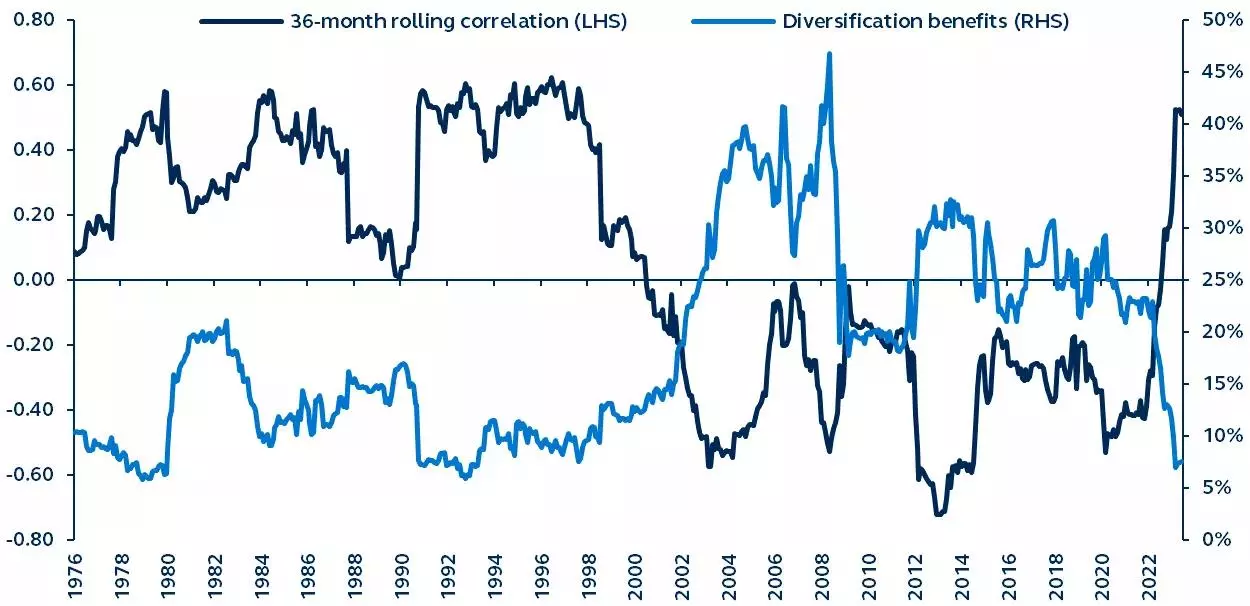The 60/40 Portfolio: Regaining Its Appeal

Summary
- Rising stock/bond correlations reduced diversification benefits for the 60/40 portfolio in 2022.
- Analysis suggests that the elevated correlations are likely temporary and the 60/40 portfolio will regain its appeal.
- Higher fixed income yields and falling stock/bond correlations have restored the 60/40 portfolio's historical reputation for risk-adjusted returns.
Perawit Boonchu
With rising stock/bond correlations reducing diversification benefits, the 60/40 portfolio suffered a historically bad run in 2022. However, an analysis of inflation and growth dynamics suggests that the elevated correlations are likely temporary, and that, combined with higher fixed income yields in the period ahead, the 60/40 portfolio will soon regain its appeal to investors seeking reasonably stable, risk-adjusted returns.
Stock/bond correlation and diversification benefits1976–present

Source: Bloomberg, Principal Asset Allocation. Data as of June 30, 2023.
| Note: Correlations are between S&P 500 and Bloomberg UST Index. Diversification benefits defined as volatility reduction of 60/40 portfolio. |
The 60/40 portfolio's abysmal performance in 2022 raised the chorus of "the death of the 60/40," with concerns that the portfolios' stability benefits and asset allocation alpha potential had been significantly and fundamentally reduced. However, the forecasts for U.S. inflation in the period ahead likely imply that the demise of the 60/40 has been exaggerated, and the higher stock/bond correlations of 2022 appear to have been more of a speed bump than a permanent shift in trajectory.
Over the last five decades, the diversification benefit, or the volatility reduction of a 60/40 portfolio, has helped a 60/40 deliver 9.4% annual returns, only marginally below the S&P 500's (SP500, SPX) 10.9% return and with much lower volatility. However, the economic environment of 2020-2022, with its large swings in inflation and rates, resulted in a breakdown of the diversification benefit. Rising correlations led to stocks and bonds falling together, driving 60/40 performance to a near-historic low.
Looking ahead, the drivers of inflation's rapid increase over the last two years are unlikely to repeat, and thanks to higher interest rates, investors are getting much higher compensation for taking interest rate risk compared to 2021-2022. In fact, recent falling stock/bond correlations combined with the highest bond yields since the Global Financial Crisis have restored the 60/40 portfolio construct back to its historical reputation as an appealing option for investors seeking risk-adjusted returns.
For a deeper dive into the past, present and future state of the 60/40 portfolio, read Is the 60/40 portfolio dead?
Editor's Note: The summary bullets for this article were chosen by Seeking Alpha editors.
This article was written by
